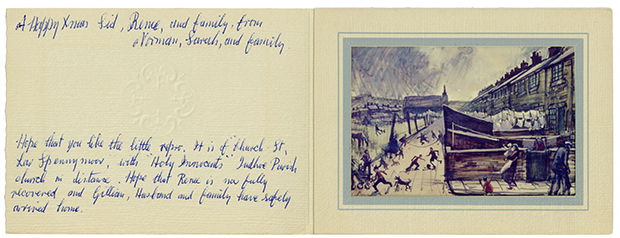
The last of the famous “Pitman Painters”, Norman Cornish, died on the 1st August aged 94. Hailing from Spennymoor, County Durham, he worked as a miner at the Dean and Chapter Colliery in Ferryhill until 1966 when he pursued a career as an artist full-time. He is best known for painting the mining village culture found in the North East, expertly capturing the characters and essence of the area.
Cornish was also a long standing member of the Spennymoor Settlement, a community centre serving the South Durham coalfield area. Established in 1930 as a reaction to the effects of the economic depression, it’s declared objectives were “To encourage tolerant neighbourliness and voluntary social services and give its members opportunities for increasing their knowledge, widening their interests, and cultivating their creative powers in a friendly atmosphere”. This was achieved partly through the provision of classes and talks on varied subjects, including cobbling, painting and sketching, sewing, woodwork, and drama.
The Spennymoor Settlement was also known as the Pitman Academy as it nurtured the talents of many prominent North-East art individuals whose roots were in mining, including those of writer Sid Chaplin. Chaplin from Shildon, Co. Durham, also worked at the Dean and Chapter Colliery and was involved with the Spennymoor Settlement, meaning his path invariably crossed with that of Norman Cornish. Various records within the Chaplin (Sid) Archive held at the Newcastle University Special Collections and Archives, relate to the Spennymoor settlement. These include correspondence during Sid’s time as the honorary secretary, a programme for the Festival of Art 1949, and the 21st Birthday Commemorative magazine from 1951 that includes short story “The Bicycle against the wall” by Sid Chaplin, and an image of a portrait of Sid Chaplin by Norman Cornish.
